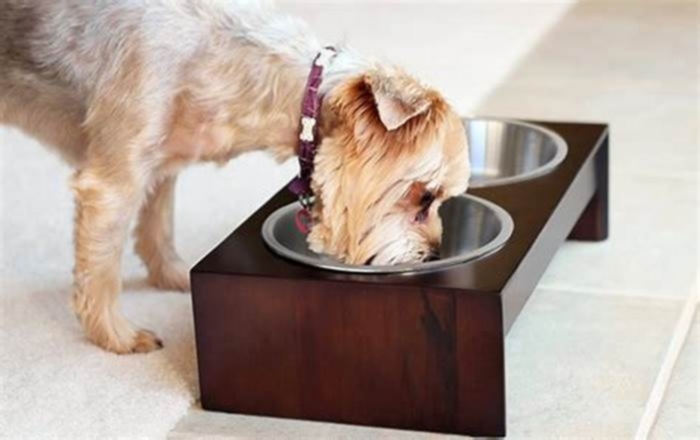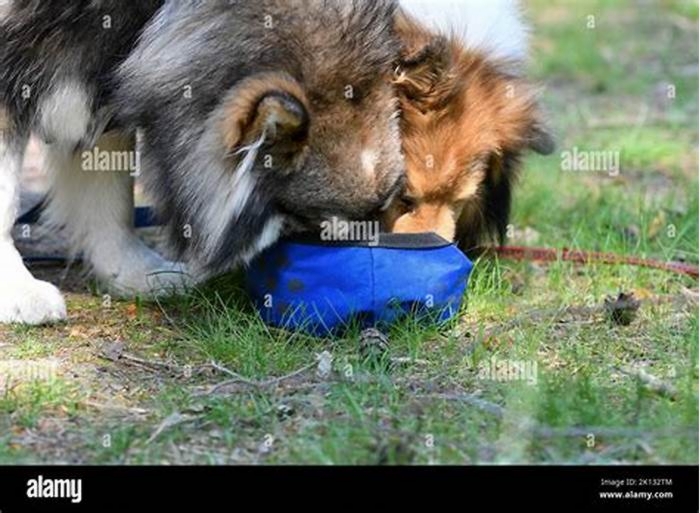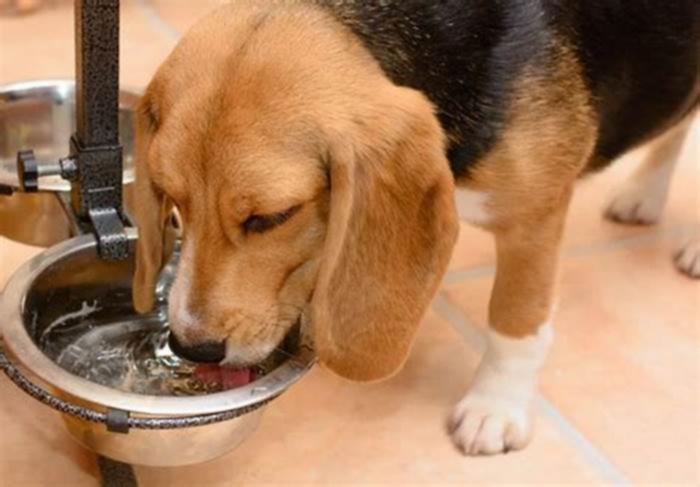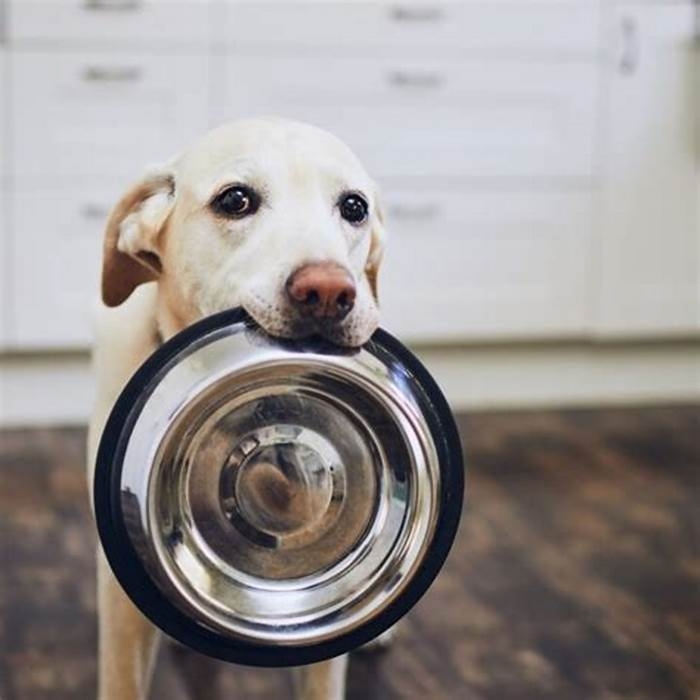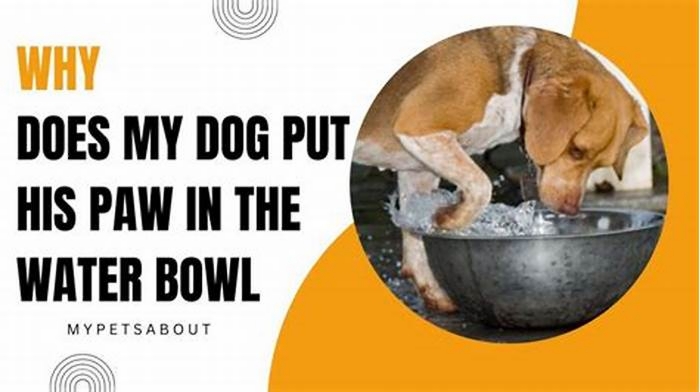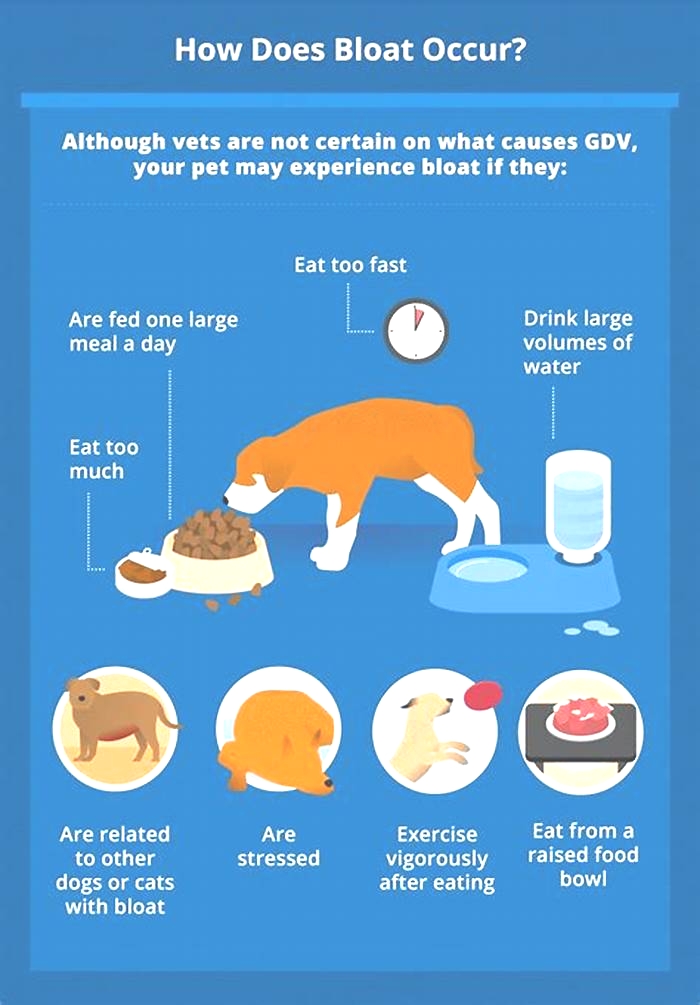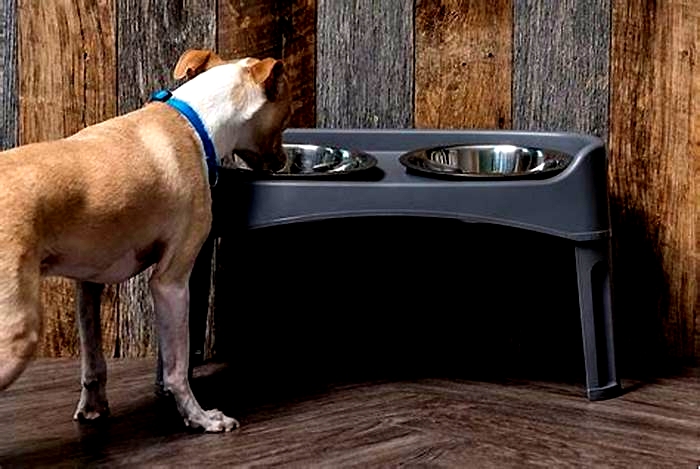What is the best bowl for dogs to eat out of
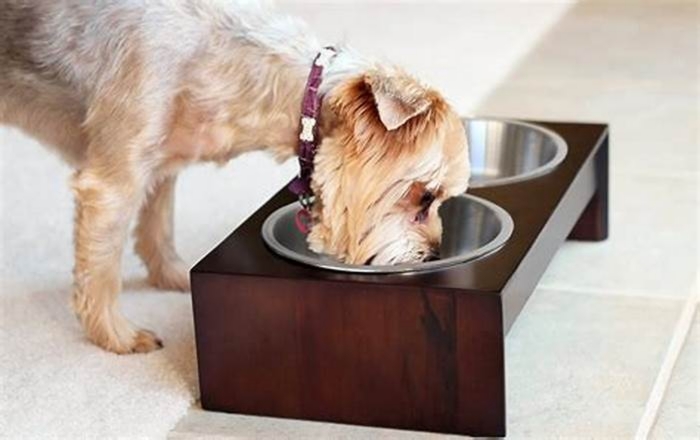
5 Benefits of Elevated Food Bowls for Dogs: Myths or Facts?
Over the years, there have been plenty of contention topics among dog owners are grains good or bad?
Should dogs be spayed or neutered before a certain age?
Can they see color?
However, one topic that has repeatedly been questioned is the benefit or detriment of elevated food bowls for dogsand how these now popular raised dog food bowls affect our pets.
What are elevated dog food bowls?
 An elevated dog food bowl is any pet food bowl that does not sit directly on the floor. The actual height of elevation of the bowl may vary based on design. There are elevated dog food bowls (also called raised dog food bowls) that come in set elevations for different-sized dogs.
An elevated dog food bowl is any pet food bowl that does not sit directly on the floor. The actual height of elevation of the bowl may vary based on design. There are elevated dog food bowls (also called raised dog food bowls) that come in set elevations for different-sized dogs.
There are adjustable raised pet food bowls that allow owners to choose a specific bowl height.
With the popularity of raised food bowls, many pet owners have wondered if they should ditch their old regular dog food bowls and start their canines on elevated ones due to the potential benefits they provide.
However, there's more to know about elevated pet food bowls than some sources may lead you to believe.

How to pick a raised dog food bowl?
If there are different heights for elevated bowls, how does one find the correct and perfect height of an elevated food bowl for a pet?
If you decide to switch from regular dog food bowls to using elevated feeders for your dog, height is the main component to consider, and it's essential to select a raised bowl at the correct height.
Measuring is key.
How to measure:
The best way to measure your dog to get the right elevated dog bowl is to get your Fido to stand with his legs directly underneath him.
From here, get a tape measure and measure from the floor up to the point where your dogs front legs meet the chest.
Alternately, you can measure from the floor up to your dogs shoulder and subtract between 3 and 6 depending upon his overall height.
You want to subtract 6 for larger dogs, whereas for smaller dogs, you would subtract 3.
Just remember: if you aim to reduce stress on your dog's spine or neck, you should use a raised dog food bowl tall enough to do this.
However, I recommend first reading this article and doing enough of your own research on using raised bowls, and here's why.
Elevated food bowls for dogs have been advertised as having many benefits for dogs' health.
Unfortunately, not all of those advertised benefits hold.
Lets take a look at some of these widely spread truths and falsehoods from a scientific viewpoint.
READ MORE:Mealtime Battle Regular Dog Bowl vs. Raised Dog Bowl
5 Myths and Facts ofElevated Food Bowls for Dogs
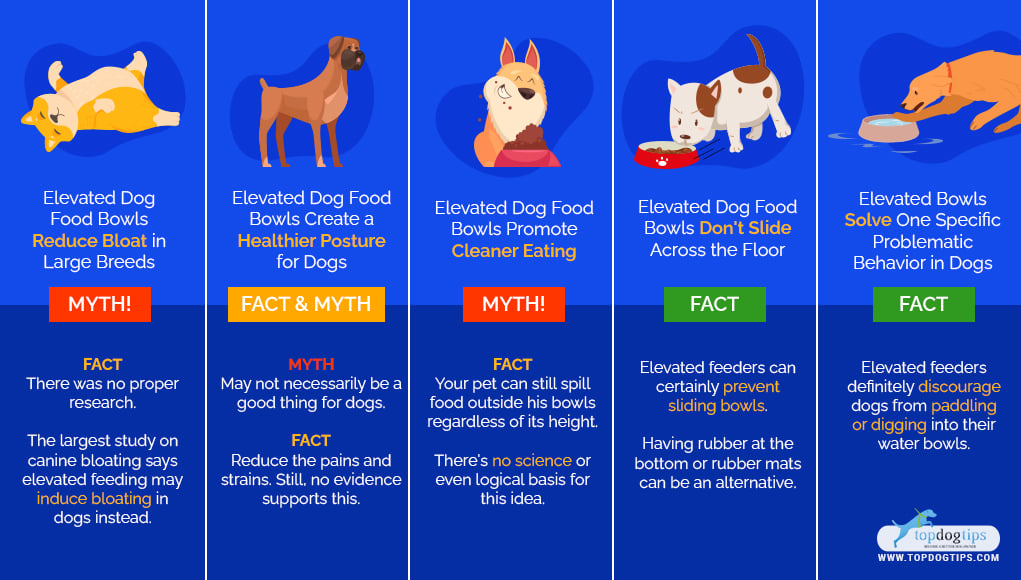
1 Elevated Dog Food Bowls Reduce Bloat in Large Breeds
This is FALSE.
When first promoted, raised dog food bowls were sold as something extremely beneficial for larger breed dogs at a higher risk of bloating.
This view was sold as science because it resulted from a statistical study (the Glickman Study).
However, this was no proper study, and the conclusion was extremely flawed.
All that this study did was look at the information of other available, non-science-based literature and anecdotal evidence that already existed and did no research into the matter at all.
In fact, the largest study on contributing factors to canine bloat in larger breed dogs to date says the exact opposite.
Elevated feeding may induce bloating in canines, especially in those with sensitive stomachs.
True, this study wasn't perfect; however, it's the best research paper we have to date.
From what research the scientific community currently has, the idea that elevated feeders can prevent bloat in large-breed dogs is questionable at best.
So, do elevated feeders for dogs reduce bloating in larger breeds? The correct answer here would be that we don't know for sure, but, likely, they DO NOT.
RELATED:5 Reasons Your Dog Has Canine Bloat and How to Prevent It
2 Elevated Dog Food Bowls Create a Healthier Posture for Dogs
This one is both TRUE and FALSE.
 Companies promoted elevated food bowls for dogs to prevent bloating in large dogs because they are supposed to create a healthier eating posture.
Companies promoted elevated food bowls for dogs to prevent bloating in large dogs because they are supposed to create a healthier eating posture.
The truth is that, most likely, dogs have evolved to eat in a head-down posture (sources: 1, 2, 3), so eating in a different posture may not necessarily be a good thing.
With that being said, in theory, this altered posture can be beneficial in other instances, such as older, arthritic, or injured dogs.
When a dog has a case of canine arthritis, joint pain, or immobility issues, eating with a head-down posture can cause excess strain and pain.
By raising your dog's food bowl, your pet no longer has to experience those pains and strains because they do not have to lean down as far to eat.
This has not been researched, though, and is mostly guesswork.
So, is elevated feeding good or bad for older or injured large-breed dogs? There is still controversy here, as I've indicated in my theory.
Since the evidence is scarce to support each side's benefits and detriments, it is a matter of the owner's preference.
RELATED:5 Best Collapsible Dog Bowls for Easy Travel
3 Elevated Dog Food Bowls Promote Cleaner Eating
This is FALSE.
Somewhere along the line (probably with new companies trying to sell the revolutionary raised dog food bowls and making stuff up) came the myth that elevated dog feeders promoted cleaner eating spaces for canines.
We arent sure where this idea came from, but this one is absolutely false and has no scientific or even logical basis.
Because of how dogs evolved to drink water and consume food, regardless of the height of your dog's food bowl, your pet can still spill kibble, drop kibble, or even move kibble outside of his bowl.
When dogs consume food, they have their mouths in the same proximity to the source regardless of height.
There is no science on how elevated dog food bowls promote cleaner eating, nor do we need it; watch your pooch eat.
4 Elevated Dog Food Bowls Don'tSlide Across the Floor
This is TRUE.
One concern that some dog owners have is the fact that their dog moves his bowl across the floor as he eats.
Elevated feeders can certainly prevent this from happening, and there's no doubt about that.
However, it is worth noting that a raised dog food bowl is not the only solution to the problem.
Just off the top of my head, two other things that can solve this issue are bowls with rubber on the bottom that prevents sliding or rubbery dog food mats where you can place your Fido's bowl to prevent sliding (which also helps to keep the area cleaner).
Therefore, because we have reasons to believe that elevated food bowls for dogs pose a potential hazard for some breeds to develop bloating, it may be better to choose alternative solutions to the sliding bowl problem rather than opt for an elevated feeder.
READ THIS:Dog Food Bowls That Slow Down Eating When Do You Need One?
5 Elevated Bowls SolveOne SpecificProblematic Behavior in Dogs
 This is TRUE.
This is TRUE.
One particular behavioral issue in dogs that isn't common but can be seen often enough for owners to start looking for solutions attempting to swim or dig into the water bowls, even if the bowl is small.
Some dogs, particularly those with a high predilection for water, spend a great deal of time trying to paddle in their water bowls as if it's the pool.
There's no explanation for this other than they like to be in the water.
The issue is most common with puppies.
Elevated feeders definitely discourage dogs from turning their water source into a pool.
VIDEO GUIDE:How to Choose the Right Dog Bowl (step by step)
The Final Verdict
Frustratingly, when I try to summarize my conclusions on the benefits of elevated food bowls for dogs, I must admit that there are both benefits and detriments to their use. Overall, I would say that the potential cons of using elevated dog food bowls outweigh the possible pros (unless you have a particular reason to use them).
So if you are considering using a raised dog food bowl for your Fido, my advice is that you weigh these pros and cons against your specific case and your specific dog before making your final decision.
Remember to consider the added cost of raised dog food bowls, especially if you're currently on a budget dog food diet.
Say you have a Great Dane and want to use an elevated feeder to reduce the strain on his neck and spine while eating.
Science indicates that an elevated feeder in larger dogs prone to bloating more easily is contradictory.
So, while your Great Dane may not experience strain in his neck from eating at an elevated feeder, the risk of bloating trumps this benefit.
Say you have a 14-year-old Basenji (a breed not particularly prone to bloat) with a severe case of canine arthritis in the neck, spine, and legs.
You want to use an elevated feeder to assist with posture-related pain and strain.
Common sense indicates that using an elevated feeder in this instance would be beneficial.
Potentially alleviating pain and strain and would not pose concerns of increased risk of canine bloat.
Whatever your decision, definitely speak with your veterinarian before making a switch to a new dog feeder.
Explain the concerns that you have and ask for advice on the best methods to fix them.
Maybe the answer is elevated food bowls for dogs, and maybe it's not.
Common Questions About Elevated Food Bowls for Dogs
If you still have any lingering questions about elevated food bowls for dogs, the following information should help.
Should a Dogs Food Bowl Be Elevated?
You should consider elevating your dogs food bowl if he is elderly or has issues with his joints or bones. Stick to other options if your dog is a larger breed.
Why Are Elevated Dog Bowls Bad?
Elevated dog bowls are only bad for certain dogs. Specific breeds are at a higher risk of bloat if they eat from an elevated bowl.
Do Elevated Dog Bowls Help?
Yes, elevated dog bowls can help your dog, especially if he has bad joints or bones. It can reduce the strain on his joints, including his hips and neck.
Do Raised Dog Food Bowls Cause Bloat?
Depending on the breed, elevated food bowls for dogs can cause bloat. Luckily, there are some things you can do to reduce the risk.
Let your pup take advantage of an elevated bowl.
Are our Raised Dog Bowls Dangerous?
As long as you know the risk of bloat and take proper precautions, raised dog bowls are not dangerous. To be safe, consult your dogs vet before switching him to an elevated bowl.
READ NEXT:Top 25 Best Puppy Food Brands (2018)

What does it mean when dogs eat out of the same bowl?
Dogs eating out of the same bowl can mean a few different things. In some cases, it may simply mean that the dog is sharing the food with another animal or person. In other cases, it may be an indication that the owner isnt providing enough food for their pet, or that the dog is stealing food from other people or animals. If you notice your dog eating out of the same bowl consistently, its important to investigate and figure out why.
Is it OK for dogs to eat out of the same bowl?
Dogs have been known to eat the same thing from their bowl multiple times a day. Is it okay for them to do this? Some people say that its okay, while others think that dogs should have their own separate bowl for eating. Ultimately, it is up to the individual dogs owner to decide whether or not this behavior is acceptable.
Why wont my dog eat out of his new bowl?
What could be causing your dog not to eat out of his new bowl? There could be a few reasons why your dog isnt eating out of his new bowl, and figuring out which one is causing the problem can be tricky.
The first thing to check is whether or not your dog is drinking enough water from the bowl. If the bowl isnt big enough for your dog to drink from comfortably, he may simply be refusing to drink from it because its new. Make sure the bowl is filled with fresh water each day and that there are no leaks around it.
Next, make sure that the bowl is sturdy enough for your dog to stand up in. Many dogs will refuse to eat from a dish if its too low or unstable for them to get a good foothold on.
Why do dogs take their food to the carpet?
Dogs have been known to take their food to the carpet in order to eat it more quickly. This behavior is commonly seen in dogs that are fed dry food, but can also be seen in dogs that are fed wet food. Studies have shown that when dogs take their food to the carpet, they are able to consume their food more quickly and without making a mess. This behavior is often seen as a sign of submission or obedience.
Should you feed dogs at the same time every day?
Dogs are pack animals and as such, they instinctually crave contact with their pack members. The act of feeding them allows you to provide this contact while also satisfying their hunger. However, there is no need to feed your dog every hour; feeding them at regular intervals will suffice. Feeding your dog at the same time each day also helps to establish a routine which can help to improve your dogs mood and behavior.
Why does my dog follow me everywhere?
Dogs have been mans best friend for centuries and for a good reason. Their loyalty and devotion to their owners is unparalleled. Dogs are naturally curious and want to know whats going on around them, which is why they tend to follow their owners everywhere. If youre having trouble getting your dog to stop following you, there are a few things you can do to try and get them to focus on something else. One thing you can do is take them for a walk in a different area of the house or yard. This will help them get some exercise and break the routine of always being around you. Another thing you can try is training your dog using positive reinforcement techniques such as treats or petting. This will teach your dog that following you is good behavior and theyll be less likely to do it out of habit instead of because they want to please you.
Why does my dog drop his food on the floor before he eats it?
There are many possible reasons why your dog might drop his food on the floor before he eats it. Maybe hes just not very hungry, or hes distracted by something else. Maybe he has a digestive problem that makes him lose his appetite before he has a chance to eat. Whatever the case may be, you need to figure out whats causing this behavior and address it head on. Here are some tips to help you out:
1. Watch your dog closely to see if theres anything going on that might be distracting him or causing him to lose his appetite. If you see anything suspicious, like another animal in the room or a toy thats been bothering him recently, take action right away.
2. Make sure your dog is getting enough exercise.
Why does my dog only eat when I hand feed him?
Many dog owners may be surprised to learn that their dog only eats when they hand feed them. This behavior is often referred to as free feeding. Dogs that are free fed have a natural inclination to eat more frequently when they are given food rather than being forced to wait for it.
There are many reasons why a dog might only eat when hand fed, including dependence on the human caregiver, lack of opportunity to scavenge for food, or dominance over other animals in the animals environment. If you want your dog to start eating more regularly from a bowl instead of relying on you to give them food, it is important to provide them with plenty of opportunities for scavenging and socialization.
How do you feed a dog without a bowl?
No one likes to have to give their dog a diet without bowls, but its possible. Many people feed their dogs by hand, which is great for single-dog households or when youre travelling, but can be difficult to do with a large dog. Handfeeding can also be time-consuming and frustrating when your dog wont eat from your hand.
One solution is to buy a feeding bowl that attaches directly to a leash or collar. This type of bowl is perfect for small dogs because they dont have to crane their neck up to get the food. Plus, if your dog gets too excited and starts jumping up at you, the bowl will keep them from knocking it over.
Another option is to use Kongs or other rubber toys as feeding stations.
Is peanut butter good for dogs?
Peanut butter has been around for centuries and is considered a staple in many households. Many people think that peanut butter is good for their dogs, but is it really? There are pros and cons to peanut butter as a treat for your dog.
The pro side of peanut butter as a treat for your dog is that it provides them with important nutrients such as protein and healthy fat. Peanut butter can also help regulate the dogs blood sugar levels, which can be helpful in managing diabetes in dogs. Additionally, peanut butter can provide some added flavor to their diet which can be beneficial.
However, there are also some potential cons to feeding your dog peanut butter as a treat. One potential con is that it can contain unhealthy fats and oils which can cause health problems if ingested in high quantities.
Why do dogs lick you?
Dogs lick people for a variety of reasons. Dogs may lick people to show affection, to clean them, or as a way to get something they want. Some dogs also lick people because they are sick or have a disease.
How long should a dog go between meals?
When it comes to how long a dog should go between meals, there is no set rule. Some dogs will go a few hours while others will need to have their food divided into smaller meals throughout the day. While there is no one right answer, it is important to keep in mind that dogs are creatures of habit and will likely be more comfortable and energetic if they follow a routine that they are used to.
Is it cruel to feed a dog once a day?
The debate over whether it is cruel to feed dogs once a day has been going on for years. Some people believe that this is the best way to care for a dog, while others believe that this practice is inhumane. Proponents of feeding dogs only once a day argue that its easier on both you and the dog. Feeding dogs more than once a day can lead to obesity and other health problems. Plus, some people contend that giving a dog too many snacks can lead to behavioral issues. There are also those who think that forcing a dog to beg for food every time he or she wants something is demeaning. Ultimately, whats best for your pet will vary depending on his individual personality and habits.
How long after eating does a dog poop?
Dogs are true carnivores and as such, their digestive systems are adapted to digest and process meat. The average dog eats three meals a day, but this varies depending on the size, age and activity level of the dog. Dogs typically eat between 12 to 16 ounces of food each time. This includes both dry and wet food. Dry food is most often eaten first, followed by wet food. After eating, dogs will usually poo within two hours or so, but this can vary depending on the size and age of the dog as well as how much they ate.
Conclusion
In conclusion, it can be assumed that dogs eat out of the same bowl because they are social animals that like to share food with others. It is also possible that this behavior is linked to pack behaviors, as dogs may feel more comfortable and secure when eating together in a communal setting. Consequently, it is important for dog owners to make sure their dog has its own individual bowl so that it can eat without feeling pressured to share.
I am a dog lover who helps others by writing blog posts about dog-related topics. I enjoy helping people find information they may have been looking for and giving them the opportunity to interact with me in a positive way.
View all posts
Disclaimer
The post provides general informational content and is not a substitute for professional veterinary advice. The information may not be accurate, complete, or up-to-date. Readers should consult a qualified veterinarian before attempting any solutions or treatments mentioned in the post. The post disclaims any responsibility for adverse effects resulting from implementing the information without proper veterinary consultation. The well-being and safety of the pet should always be prioritized, and expert guidance from a licensed veterinarian is essential.


